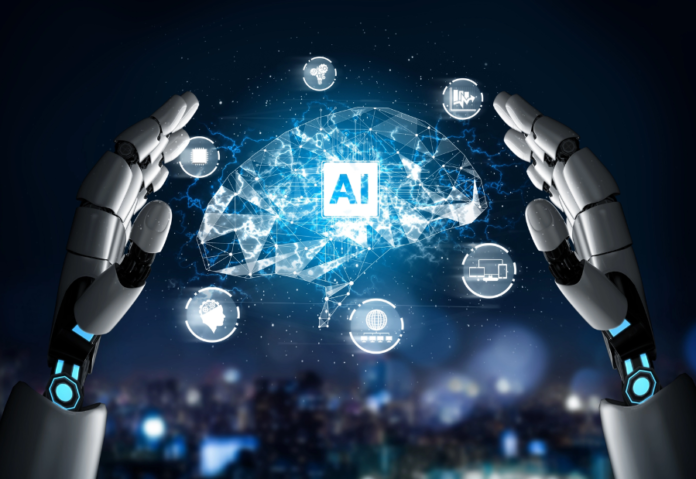On November 30, 2022, Open Al, a startup, announced ChatGPT, which set off a chain reaction of events. With the help of ChatGPT, a virtual assistant, users can get help writing essays and producing text, images, and videos.
Since the beginning of electronic computing, computer science experts have dreamed of giving computers intelligence (AI) comparable to that of humans. The prospect of teaching computers to learn from repeated experiences in a similar way to a newborn baby has long stumped computer scientists. In the 1950s, Alan Turing, a British mathematician and logician, asked, “Can machines think?” After seventy years, we are finally starting to witness the birth of Al, thanks to the convergence of powerful computers, enormous amounts of data, and innovative ways of creating neural networks.
November 30, 2022, saw the launch of ChatGPT by Open AI, a startup. This marked the beginning of the Al boom. With the help of ChatGPT, a virtual assistant (also known as a chatbot), users can get help writing essays and producing text, images, and videos. It can be used to write code and translate across languages. In order to acquire answers to their inquiries on a variety of subjects, the user can have human-like conversations with the machine. Through the use of a “generative pre-trained transformer,” a kind of machine learning technique, ChatGPT generates new text in response to user prompts by utilizing deep learning and a sizable training text library.
Al is starting to have an effect on many different businesses. Al has made great advances in medical imaging, offering instruments that help diagnose diseases just as well as—and occasionally even better than—human radiologists. Al is being used to analyze enormous databases of clinical, genetic, and protein data in order to identify viable targets for novel medications. This is greatly speeding up the process of finding possible cures for diseases and resulting in more rapid advancements in medical science.
Al is revolutionizing the financial sector in a number of ways, including increased efficiency, security, and customer personalization; Al algorithms are being used to analyze massive volumes of transaction data in real-time to identify suspicious patterns and prevent fraudulent activity; Al-powered robots are automating tasks on factory floors, optimizing production lines, and improving quality control; Al is being used to analyze sensor data from machines, enabling preventive maintenance, reducing downtime, and saving companies money; India has a large pool of IT talent, but there’s a dearth of qualified experts in specialized fields like machine learning and deep learning. Even with Al’s productivity gains, the net employment shifts. To help narrow this gap, India should concentrate on funding Al education and training initiatives. The government should actively support industry-academia cooperation to promote innovation in Al research, just as it did in semiconductors. By constructing new data centers with high-performance GPU processors, public-private partnerships should be encouraged to create a strong Al infrastructure. This will allow a large number of professionals to have affordable access to these facilities for the development of Al models for the manufacturing, healthcare, and drug discovery sectors. Assuring the security of India is one of the most important use cases for Al. India has previously started utilizing AI to bolster its security framework, analyzing vast volumes of data from sensors, security cameras, and social media to spot possible dangers like terrorist activities. Al is a powerful tool to combat cyber threats. AI algorithms can detect sophisticated cyberattacks, including zero-day attacks, and automate responses to mitigate damage. Additionally, Al can help analyze network traffic and identify potential vulnerabilities before they can be exploited. Agents can flag suspicious activity, much faster and more effectively than humans can. India should proactively address its border security threats and ensure the safety of its citizens by deploying Al-powered drones and surveillance systems to patrol India’s vast borders, reporting illegal crossings and intrusions in real-time. Al systems have great potential for good, but when utilized improperly, they might reinforce biases found in the training data. Nevertheless, Al is a very formidable tool. Negative consequences may result from this. The government should proactively encourage responsible AI deployment and provide ethical rules and legislation to address potential biases and privacy concerns in order to harness the power of AI for a brighter future.
Also read: Achieving Rapid Outcomes with AI-Driven Cloud Analytics
Do Follow: CIO News LinkedIn Account | CIO News Facebook | CIO News Youtube | CIO News Twitter
About us:
CIO News is the premier platform dedicated to delivering the latest news, updates, and insights from the CIO industry. As a trusted source in the technology and IT sector, we provide a comprehensive resource for executives and professionals seeking to stay informed and ahead of the curve. With a focus on cutting-edge developments and trends, CIO News serves as your go-to destination for staying abreast of the rapidly evolving landscape of technology and IT. Founded in June 2020, CIO News has rapidly evolved with ambitious growth plans to expand globally, targeting markets in the Middle East & Africa, ASEAN, USA, and the UK.
CIO News is a proprietary of Mercadeo Multiventures Pvt Ltd.






